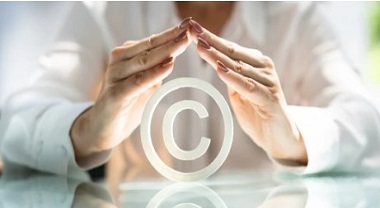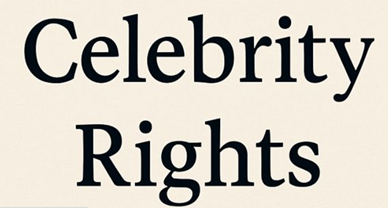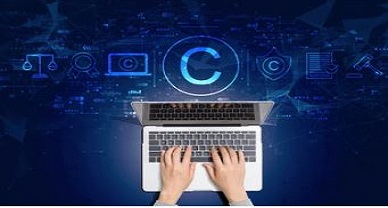Copyright-A Bane For The Students Or A Boon For Copyright Owners?
Education is a building block or a foundation on which a progressive society can be built. We as a human society are supposed to be achieving excellence and for that, we cannot just seek functional literacy, instead, we need good quality education that is affordable, accessible, equitable and available to all. This is the time when India is going through an upheaval of changes in our education system with the help of different policies of government as well as with the use of different technologies in modernizing the way of learning.

The result is that both rural and urban India are witnessing mushrooming of not only government but also private schools, colleges, universities, preparatory centers for entrance into different professional colleges and jobs, etc. Though these institutions get recognition from the authorities but many of them lack the basic infrastructure to maintain a viable environment for good education. Lack of good libraries even within an institution is the most common problem seen across our country.
Among the other solutions, the most easy and feasible way to come out of the problem of unavailability and unaffordability was to start copying the books, study materials, and video lectures with the help of different mechanisms. Since this helped students to get access at a bare minimum cost and without spending much time. The photocopy shops are also getting benefited from this and at large it is becoming a most commonly accepted practice.
The time is ripe to strike a balance between the copyright owner’s economic interests and the public’s right to have access to information and knowledge for growth and development of society before it turns out as blessings of talent over the curse of poverty.
Why does the problem arise?
Copyright ensures certain minimum rights and it has never been an absolute right. If copyright protection is applied rigidly, it will hamper progress of the society. However, copyright laws were enacted with necessary exceptions and limitations to ensure that a balance is maintained between the interests of the owners and of the community. The most universal limitations to the rights of the owner are the right to copy insubstantial parts and the right of fair dealing or use. Here, the Fair use doctrine does not define any boundary within which anything can be put, the list can be endless. Therefore, the Copyright owners feel that some of the claims under “public benefit” are unreasonable and are detrimental to their economic interests.
The challenges are of complex nature because:-
- The price that a copyright owner may deem to be “fair” is not always one that users of the work are willing or able to pay.
- These are the works for which the education sector is the only effective market and copying such work will make them uneconomic for the copyright owner.
- The course packs provided by the coaching centers get copyright protection which is merely the compilation by insubstantial copying of different published works.
- The exceptions in fair dealing have been stated in general terms and the list is not exhaustive.
- The users of infringed copyrighted work are not even aware that they are causing monetary losses to the person and publication associated with it.
- The secondary copyright infringement or contributory infringement has not got much attention.
Evolution afterward
Different countries have taken steps to restrain the users from infringing the copyright in educational institutions. The United Kingdom on the recommendation of the Whitford Committee on the issue of reprography established “Copyright Licensing Agency” which offers a blanket license to schools and colleges for a negotiated annual fee. Along a similar line, the USA also offers blanket licensing through the national RRO (Reproduction Rights Organization).
Section 33(3) of the Indian Contract Act 1957 provides for the registration of copyright societies to perform the business of giving licenses in respect of any work in which copyright subsists. In 2000, the Indian Reprographic Rights Organization was established for granting the licenses on behalf of authors and publishers. It mandated corporate bodies, reprographic shops, libraries, educational institutions, etc. for taking reprographic usage licenses after paying a prescribed tariff. The user can opt for two types of plans, one is “blanket licenses” and the other is “transactional licenses”. In 2012, when IRRO raid in the University of Delhi, It was commented by the secretary of IRRO that, IRRO has merely given a few licenses to corporate bodies. No educational institution applied for any licenses till now.
According to annual reports published by IRRO, It collected only INR 3,21,800/- as license fees for royalty distribution 2019-20. The number suggests its misery.
Way Forward
The majority of students in higher education rely on libraries for literature, where either they sit and study or get books on loan or get the relevant material photocopied. Photostatting the book, and downloading the lecture from any server becomes easy and cheaper for students than buying at a very heavy cost. As, books professional courses like medicine, and law are very costly. Therefore, the solution to the problem posed by reprography should be mapped out only after thorough consideration of the practical circumstances of economically challenged students and researchers.
The Government of India can encourage the educational institution, libraries, publishers, and other concerned groups to come forward and develop an understanding for an equitable balance between users of information and authors. For a developing nation like India, The need is to make the information and knowledge accessible to all the sections of society at an affordable cost.
Author: Ujjwal Kumar- a student of IIT Kharagpur, currently an Intern at IP & Legal Filing, in case of any queries please contact/write back to us at support@ipandlegalfilings.com.



